How to correct your slice in golf
How to correct your slice in golf
Written by Golfweek
Dealing with a slice can be one of the most frustrating aspects of golf for amateurs. The banana ball flight off the tee makes it difficult to keep the ball in play and can drastically reduce the ball flight.
Here are a few tips to help eliminate your pesky slice and hit it further and straighter off the tee.
The grip
This is often the first thing that goes wrong and can lead to a big slice. In order to properly grip the golf club, right-handed players should take the club first in their left hand and grip it mostly with their fingers. With the clubface on the ground, turn your left hand until two knuckles are visible and form a “V” shape with your left index finger and thumb. Place your right hand over the left and create the same “V” shape with your right index finger and thumb, pointing to your right shoulder.
The Setup
Start with the ball teed up and placed just off the inside of your front foot. Place your head a few inches behind the ball. This will help create an upward strike off the tee rather than a downward strike. When the club makes contact at a downward angle it can create a lot more spin and take away distance, leading to that big slice. Your shoulders should also have a natural tilt due to your head placement behind the ball.
The swing
Using that shoulder tilt from setup, rotate your shoulders and bring the club back until your left shoulder is underneath your chin. This will allow you to complete an inside-outside swing path. A big slice is often the result of an outside-inside swing path, which feels like it should cause the ball to go left but creates the opposite effect. For the proper inside-outside swingpath, picture hitting the ball to the opposite field in baseball or softball.
The Clubface
One of the biggest contributing factors to a slice is an open clubface. Once you’re swinging on an inside-outside path, slightly rotate the toe of the club over the heel while swinging through impact. This will square the clubface at impact and help produce the proper ball flight.
Source: Golfweek


